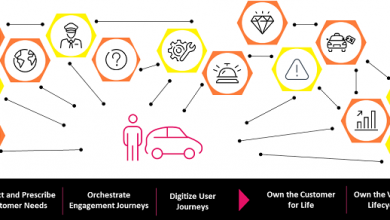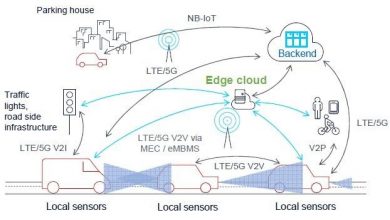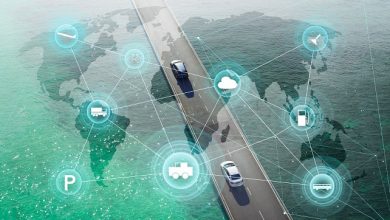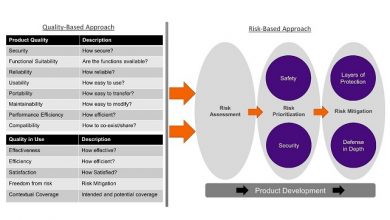Connected vehicle ecosystem in India
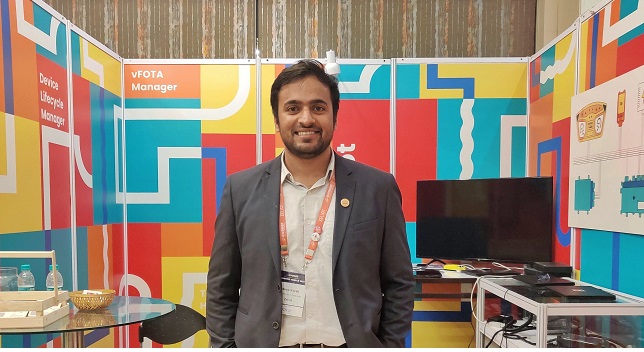
Telematics Wire had a small discussion with Sudeep Nayak, Co-founder and COO, Zeliot about the connected vehicle ecosystem in India. Here are the excerpts of the discussion:
Tell us about the Connected vehicle ecosystem in India.
Today, human-machine collaboration is moving into a new phase. Artificial intelligence and seamless connectivity in tech-driven IoT systems have generated a contemporary hyper-reality that is transforming mechanical reflexes into proactive synapses, parallel to human intellect. This is the era of automated device interconnection which is ignited by the combination of human analytical intuition and machine learning.
The business we are in today falls under the umbrella of IoT, and the appropriate keyword is Telematics. Telematics is actually contributing to more than ~60% of IoT business. With the advent of connected vehicles/Connected Machines, the industry is expanding very rapidly. The potential can be traced to the 2010s mobile phone market.
This decade will belong to mobility as a whole and IoT plays a very vital role in achieving mobility use case. The industry will be growing at more than 25% CAGR and as we speak on a daily basis there are many new uses cases emerging, Usage Based Insurance being on the most recent one when it comes to Indian market. The adoption of connected vehicle technology by enterprises is one of the most significant trends we have seen; this will pave the way for mainstream adoption.
Telematics is a sun-rise industry and has a huge growth potential in this decade. The key is to be agile and identify the right market fit for the product early on – this is certainly a challenge as the use cases and industries that telematics can cater to are immense.
Telematics is an ecosystem play – it encompasses hardware manufacturers, network providers, cloud providers, solution developers and businesses / end customers. One needs to have strong partnerships across these various ecosystem players to be able to come up with products / solutions that add strong value to the customer.
Zeliot Identified Connected Vehicle – Industry Problems
- Connected vehicles generate vast amounts of data. OEMs/Enterprises currently lack tools to facilitate the transfer & storage of data securely on the cloud. Also, comprehensive consent management tools to capture end customer consent are missing.
- With increasing complexity in vehicle architectures, there are limited options for OEMs/Enterprises to adopt connected vehicle technology comprehensively. Off-the-shelf solutions will not be suitable as the requirements may vary across OEMs/Enterprises.
- Tangible Return-on-Investment for the Automotive OEMs/Enterprises on the investment of connected technology is limited.
What are the services and applications around connected vehicle?
Connected Mobility platform is the software which will act as the bridge between the telematics device and the cloud. CMP enables the enterprises access of two-way communication where in fleet manager can fetch the real-time data from the vehicle and also can control the vehicle by sending out the CAN commands remotely. Also, OEM’s can upgrade the firmware of the ECUs over the air (OTA).
Currently in connected mobility services, solutions are being provided as follow
SaaS (Software as a service):
Software as a service is type of service where in the data generated from the telematics device is collected and stored in the vendors cloud and through the application provide the connected solution.
Pros of SaaS are:
- Consistently increasing revenue source for Vendor
- No overhead of managing cloud subscription for OEM / TSP
Cons of SaaS are:
- Vendor has access to OEM / TSPs data
- Operationally expensive for OEM / TSP
One – Time
One-Time is type of solution where in the data generated from the telematics device is collected and stored in the enterprise cloud and through the application developed by the vendor is linked to the cloud to access the data.
Pros:
- OEM / TSPs data is secure on their own cloud subscription
- Cost-effective for the OEM / TSP
- No cloud management overheads for the vendor
Cons:
- No recurring revenue for vendor
- Cloud management overheads for the OEM / TSP
Zeliot offering products through cloud marketplaces (Azure Marketplace, AWS Marketplace) is adding a different dimension to the business as this GTM is particularly special for the mobility sector due to its many benefits in terms of data security, customizability, and cost.
The offerings from Zeliot are divided into 3 major BUs. SaaS (Software as a Service), PaaS (Platform as a Service), LaaS (License as a Service), there are independent teams that work on scaling the connected mobility platform through these 3 BUs. For Zeliot, technology plays a vital role, we call ourselves as a deep tech company. What that means essentially is we don’t build solutions per industry but instead focus on building technological modules which solve problems on a fundamental data level and allow our partners or customers to build solutions of their liking.
Most of our sales happen through Technology partners whom we call TSP (Technology Service Providers). Now as we have started working with OEMs the direct customer sales have started to pick up.
Share your views on data storage and security.
One of the biggest challenges is for OEMs to integrate connected technology while managing additional expenses. Data security is also a major concern because unauthorised access to it could have adverse effects on the road.
Data security is something that businesses shouldn’t overlook when using vehicle telematics. Companies must implement a thorough security system and continually update it to ensure the safety of customer data. In addition, it’s critical to stay current with industry best practices.
When it comes to cybersecurity, shared accountability is essential. We can all play a significant part in ensuring that connected automobiles have a strong security system. One way to achieve this is by developing a successful cloud subscription model where the user retains control of the telemetry solutions. We can therefore always reconsider a world in which there is no data misuse.
The Zeliot Connected Mobility Platform is able to process massive amounts of data coming from edge devices every millisecond efficiently. It does this in the midst of the selectively compatible devices implanted in moving vehicles, providing smooth interoperability with its scalable, portable, elastic, and device agnostic IoT platform focused on Automotive Telematics.
Zeliot is offering Platform based approach through cloud marketplace for connected vehicle technologies, we can say it will be a game changer as it solves one of the biggest concerns of IoT today that is DATA privacy.
Expectations from the government in terms of policy and regulatory changes, if any?
The Indian government intends to use clean energy and clean transportation as its most effective tools in the combat against global warming. The future of mobility in India according to our Prime Minister Mr. Narendra Modi is predicted on the 7 Cs (common, connected, convenient, congestion-free, charged, clean, and cutting-edge). Additionally, he remarked, “The Internet-enabled Connected Sharing Economy is developing as the core of mobility,” demonstrating the government’s enthusiasm in implementing and promoting the connected mobility trend in the nation.
The government has made several solid decisions in recent years, also connected data has a significant impact on achieving 100 smart cities. The government is playing a vital role in encouraging the adoption of connected mobility in the nation through initiatives including
- The MoRTH amended the National Highways Fee (Determination of Rates and Collection) Rules, 2008 to enable toll fees to be collected based on how far a vehicle travels on the National Highway. This will make it more straightforward to establish a connected mobility GPS-based tolling system.
- The platform for connected vehicles has been greatly strengthened with the arrival of 5G. It will assist in making the reality of autonomous vehicles on the road.
- As part of government activities to promote the use of electric vehicles also encourage and set the pace for the adoption of the connected mobility ecosystem in the nation because connection is a necessary component of electric vehicles not as an add-on feature, but it is an indispensable feature. This will enable the collection of far more information about EVs than just location and monitoring, such as battery performance and temperature.
Despite the fact that we applaud the government’s initiatives, we must wait to hear what OEMs, fleet managers, and customers have to say about the connected vehicle revolution. Given that the data was created privately, there is a risk when it is shared, if the government considered these aspects, it would be excellent.
Some of the expectation from government in terms of policy and regulation change are
- The current AIS140 mandate doesn’t cover security of data. Mandating device manufacturers to encrypt data is a must.
- The government is establishing a secure data lake so that different industries can use the data (with the customers’ consent) to create applications. like UPI, which enables businesses like BharatPe, PhonePe, etc. In the domain of connected mobility, a similar approach is anticipated.
- More schemes, such as GPS-based tolling, connected shared mobility, and the adoption of connected public transportation systems, will promote the use of telematics and support the development of a connected vehicle ecosystem in the nation.
How Zeliot would be contributing in ‘connected vehicle ecosystem’?
Positioning Zeliot as a Platform provider and GTM being the cloud marketplace, enables Zeliot to go global quickly and enables OEMs and Technology Solution Providers across the globe to adopt Zeliot’s technology to fuel their connected mobility vision.
The advent of EVs in this decade also helps as all new age EV companies are coming up with connected vehicles. Zeliot’s platform is rightly positioned to facilitate this trend and enable new age EV startups to realize their connected mobility vision. Exciting times ahead!
Partnering with Zeliot helps enterprise or OEMs to achieve
- Data Privacy & Security
- Meets rigorous automotive safety, cybersecurity and data privacy standards
- Data encryption algorithms and certificate-based authentication prevents man-in-the middle attacks
Enhanced Cx Ownership Experience
- Enable custom branded end customer applications
- Upsell relevant services to end customers
- Incentivize end customers for safe driving
- Roll out exciting customer centric features to vehicles on field
Cost Effective
- With one platform for updates, logging, commands, and diagnostics, enterprises and OEM’s can reduce multi-vendor integration reliance & complexity.
- Industry best pricing for managing data handling and storage, optimized for connected vehicle data
Here’s how Zeliot’s products cater to the entire vehicle data ecosystem.
- Data Providers: Data from Hardware directly comes to their cloud ensuring security & privacy.
- Data Beneficiaries: Enables the development of value-added services to end customers with access to rich data.
Published in Telematics Wire

